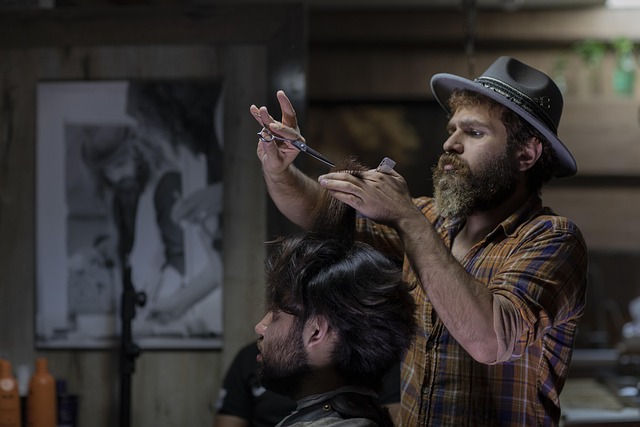Mastering the Art of Beard Grooming: A Comprehensive Guide
Beards have made a remarkable comeback in recent years, transforming from a symbol of ruggedness to a fashionable statement of personal style. This resurgence has sparked a renewed interest in proper beard care and grooming techniques. As facial hair becomes increasingly accepted in professional settings and celebrated in popular culture, men are seeking ways to maintain healthy, attractive beards. The art of beard grooming encompasses more than just letting facial hair grow; it involves a combination of careful maintenance, proper hygiene, and the use of specialized products. Understanding the intricacies of beard care can help men achieve the look they desire while keeping their facial hair and skin underneath in optimal condition.

However, the perception of beards has fluctuated over time. In the 18th and 19th centuries, clean-shaven faces became more fashionable in Western society, with beards often associated with lower social classes or unconventional lifestyles. The 20th century saw several beard revivals, including the counterculture movement of the 1960s and the hipster trend of the early 2000s.
Today, beards have once again become a mainstream fashion choice, with men from all walks of life embracing facial hair as a form of self-expression. This renewed interest in beards has led to a booming industry of beard care products and grooming services.
Understanding Beard Growth Patterns
Before delving into grooming techniques, it’s essential to understand that beard growth patterns vary significantly among individuals. Factors such as genetics, hormones, and age play crucial roles in determining the thickness, texture, and coverage of facial hair. Some men may experience patchy growth or slower beard development, while others may have full, thick beards that grow rapidly.
Beard hair typically grows in three stages: anagen (active growth), catagen (transitional phase), and telogen (resting phase). The duration of these stages can differ for each hair follicle, resulting in varying growth rates across different areas of the face. This natural variation can lead to challenges in achieving a uniform beard appearance, making proper grooming techniques all the more important.
Essential Beard Care Routine
Establishing a consistent beard care routine is fundamental to maintaining a healthy and attractive facial hair appearance. This routine should include several key steps:
-
Cleansing: Regularly washing the beard with a gentle, specially formulated beard shampoo helps remove dirt, oil, and debris that can accumulate in facial hair. This step is crucial for preventing skin irritation and maintaining overall beard health.
-
Conditioning: Applying a beard conditioner or oil helps soften the hair, reduce itchiness, and nourish the skin underneath. These products can also help tame unruly hairs and add a healthy sheen to the beard.
-
Brushing and Combing: Using a beard brush or comb helps distribute natural oils throughout the hair, detangle knots, and train the beard to grow in a desired direction. This step also stimulates blood flow to the hair follicles, potentially promoting healthier growth.
-
Trimming: Regular trimming is essential for maintaining the desired shape and length of the beard. This can be done with scissors or an electric trimmer, depending on personal preference and beard style.
-
Moisturizing: Applying a beard balm or moisturizer helps keep the skin underneath hydrated, preventing dryness and flaking that can lead to beard dandruff.
Advanced Grooming Techniques
For those looking to take their beard grooming to the next level, several advanced techniques can enhance the overall appearance and health of facial hair:
-
Beard Mapping: This technique involves analyzing the natural growth patterns of facial hair to determine the best style and shape for individual face structures. By understanding these patterns, men can work with their natural growth rather than against it.
-
Fading and Blending: Creating a seamless transition between hair on the head and facial hair requires skillful blending techniques. This can be achieved through careful trimming and gradual tapering of hair length.
-
Beard Dyeing: For those dealing with patchy growth or graying hair, beard dyeing can help create a more uniform appearance. However, it’s important to use products specifically formulated for facial hair to avoid skin irritation.
-
Beard Straightening: Men with particularly curly or unruly facial hair may opt for beard straightening techniques, which can involve heat styling or specialized products to achieve a smoother, more manageable beard.
Addressing Common Beard Problems
Even with proper care, beard growers may encounter various issues that require specific attention:
-
Itchiness: Often experienced during the initial growth phase, itchiness can be alleviated through regular moisturizing and the use of beard oils containing soothing ingredients like jojoba or argan oil.
-
Patchiness: Uneven growth can be addressed by allowing the beard to grow for an extended period, as slower-growing areas may eventually fill in. Alternatively, strategic trimming and styling can help conceal patchy spots.
-
Ingrown Hairs: Regular exfoliation and proper shaving techniques can help prevent ingrown hairs, which occur when hair grows back into the skin instead of emerging from the surface.
-
Beard Dandruff: Also known as “beardruff,” this condition can be managed through regular cleansing, moisturizing, and the use of anti-dandruff products formulated for facial hair.
The Future of Beard Grooming
As the popularity of beards continues to grow, the beard care industry is likely to see further innovations in products and techniques. Emerging trends include the use of natural and organic ingredients in beard care products, personalized grooming routines based on individual hair and skin types, and the integration of technology in beard care tools.
Additionally, there is a growing emphasis on sustainability in beard grooming, with many brands focusing on eco-friendly packaging and cruelty-free formulations. This shift reflects a broader trend towards conscious consumerism in the personal care industry.
In conclusion, mastering the art of beard grooming requires a combination of knowledge, patience, and consistent care. By understanding the historical context of beards, recognizing individual growth patterns, and implementing a comprehensive grooming routine, men can achieve and maintain healthy, attractive facial hair that complements their personal style and enhances their overall appearance.





